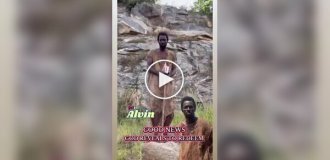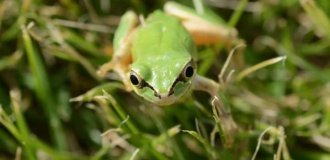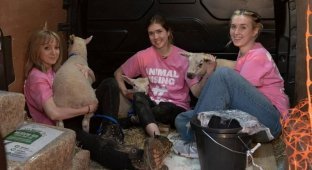Fossa: the predator of Madagascar who fooled scientists for 200 years (8 photos)
If animals were measured by stories and fiction, what people say about them, then the fossa would clearly come out the winner. There are few places where you will find such a creature that would confuse scientists for almost 200 years in a row! 
Wow! What a beautiful... cat?.. Doggie?.. Mongoose?..
The Fossa is the largest carnivorous mammal on the island of Madagascar after humans. Usually we ourselves talk about the species of the animal, but this case is unique. Will you try to guess for yourself which family or at least suborder these mustaches belong to?
It seems like it looks like a cat, but where does that long nose come from? Or maybe a relative of the marten? But what about the size then? The animals gain up to 9 kilograms of weight and can be up to 80 centimeters long from nose to tip of tail. If all this doesn’t seem enough, here’s some more controversial information. Fossas live in Madagascar, where lemurs and bats live. There are no predators there other than them. So who are the Foss after all? 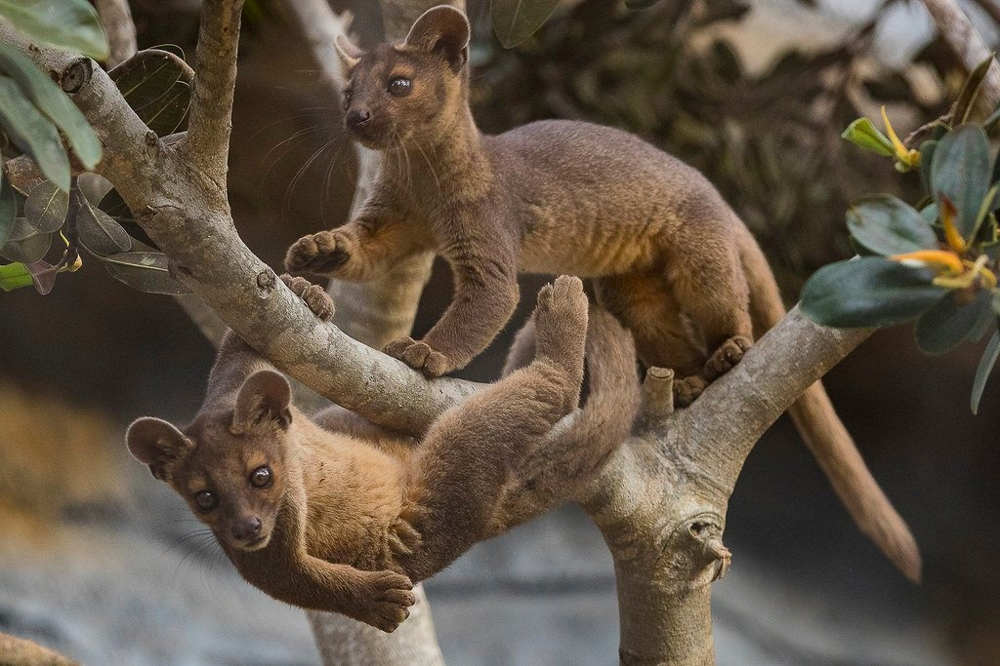
Considering how deftly the fossa jumps through the trees, they definitely have primates in their family!
Let’s not languish for too long: long discussions among scientists and several molecular genetic studies have shown that fossas belong to the suborder of feliformes. But! The seals themselves are like the seventh water on the jelly for our heroes, because according to all scientific research, fossas descended from one mongoose-hyena ancestor. How then did it happen that today the fossas are neither mongooses nor hyenas? 
The island's apex predator welcomes you! What did you come with, traveler?
The answer is simple: 20-30 million years of evolution in complete isolation from other predators! It just so happened that a group of carnivorous animals came to Madagascar from the African continent and settled there. Fossams liked the habitat - all local inhabitants became prey in Madagascar: from crabs to large lemurs. So the fossa turned into a successful superpredator of its ecosystem, which has more than one trump card in its paw. 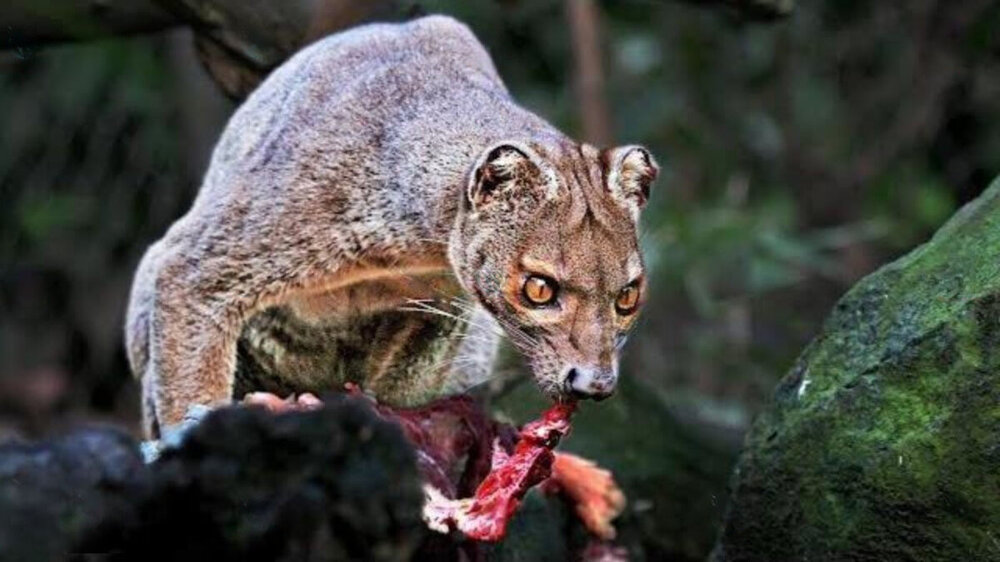
50% of Fossa's prey consists of primates from Madagascar.
The first of them, by the way, is literally in the clutches. Predators boast semi-retractable claws - almost like cats, but not quite. Animals cannot retract their claws completely, but on occasion they can easily extend them to their full length. It is very convenient if you wander and hunt not only in the savannah, but also in the forest. Running several hundred meters along the ground and deftly jumping from branch to branch is easy for our heroes. It’s not for nothing that the animals have occupied the entire island! 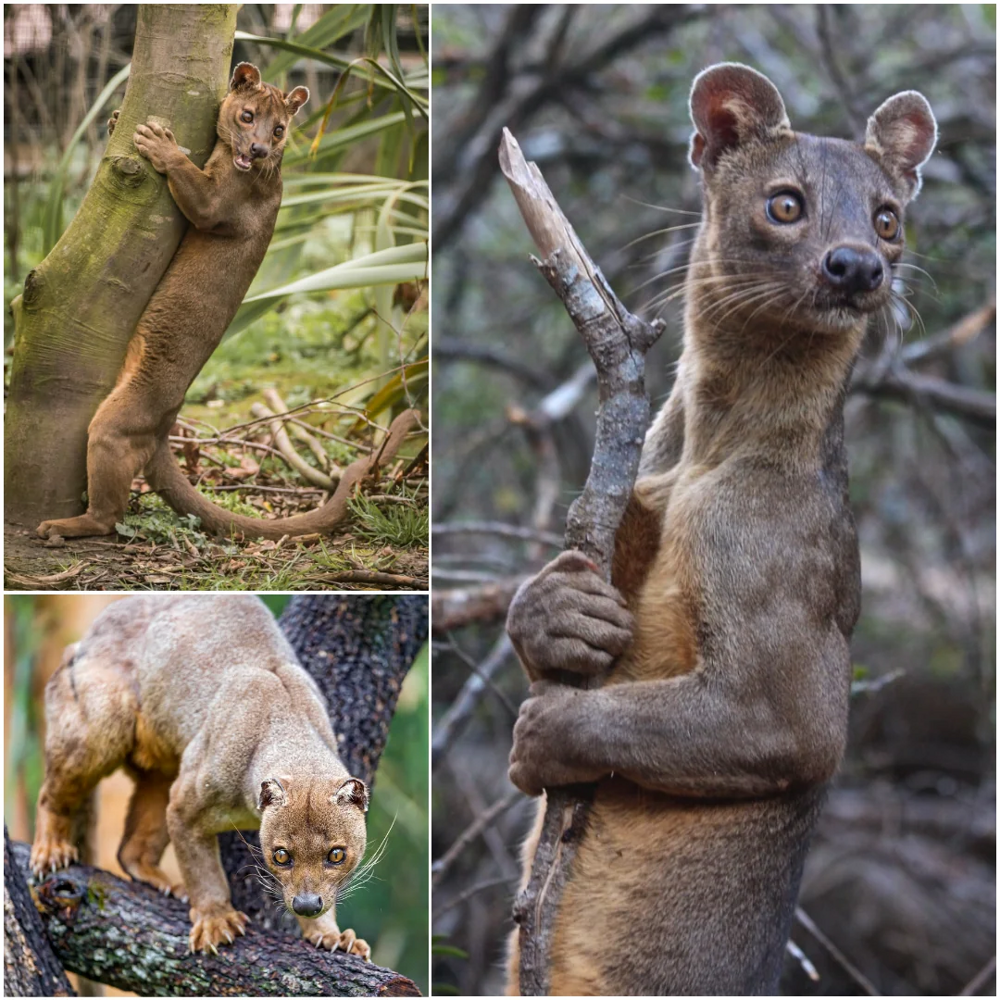
This is my tree. This is my stick. This is my island!
The second secret of the Fossus is much more intimate, however, according to scientists, it is this that allows the animals to reproduce so effectively under conditions of low population density. The male's territory, for example, occupies about 26 km², and the female's - 13 km². Sometimes territories can overlap, so in general the value is approximately 1 adult per 5.6 km². How to overcome the distance? Animals solved this problem very simply. Punctuality! 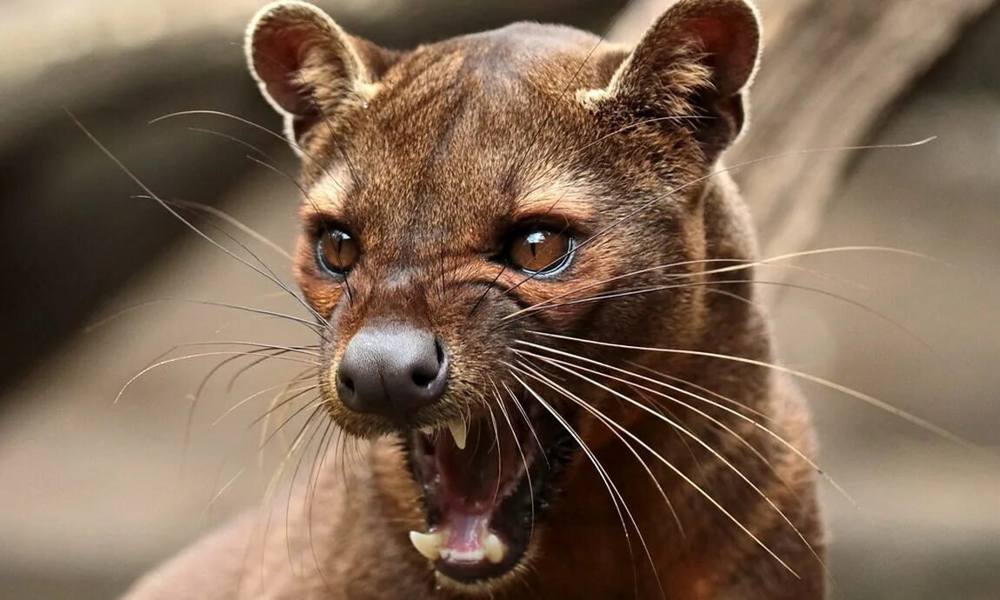
Lenka is late again...
Every year, from September to December, females ready to mate choose a suitable tree with wide and strong branches. They will remain near the coveted trunk throughout the entire estrus, attracting suitors with screams and secretions of special glands. Males scream and fight among themselves for the right to continue the race. This is right with a small bonus: due to anatomical features, the process of love can last up to 3 hours in a row. The trick is that every year the female comes to the same tree about every day. It’s very convenient - you don’t have to look for a partner all over Madagascar, just come to the right place at the right time. 
When you're the apex predator on your island, you might as well get some sun!
All this is started for the sake of a 3-month pregnancy and 1-6 small helpless lumps, which the female will take care of herself. Kittens are completely dependent on their mother for up to 4.5 months - until they learn to eat only meat and walk around the area. But even then they will remain nearby for another whole year and learn all the secrets of phossian life. And they have it for a long time, animals in captivity dogeThey live up to 20 years. 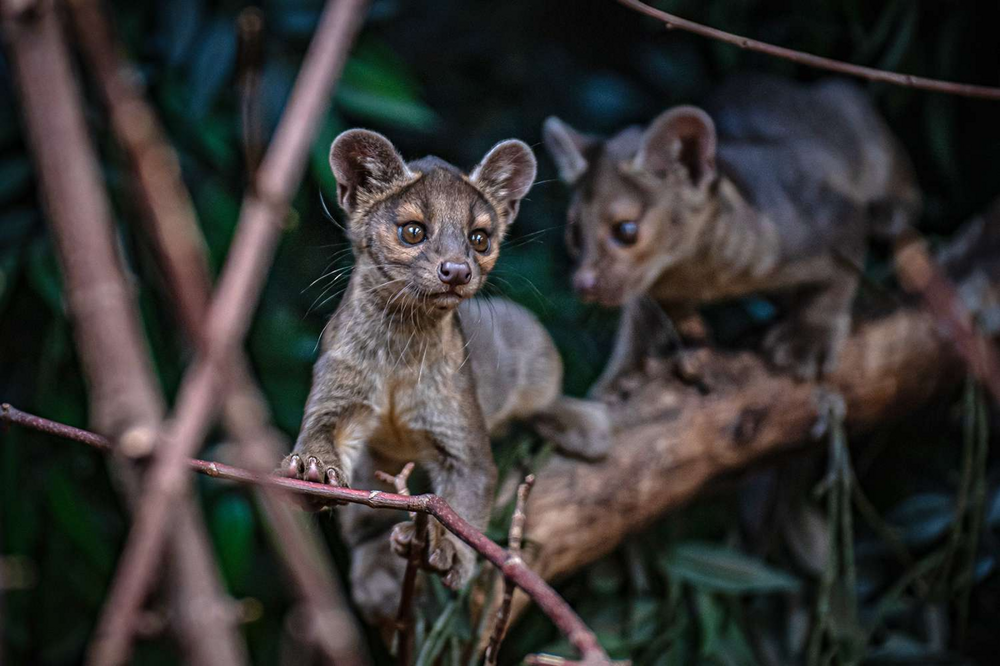
Fossa kittens can compete in cuteness with regular ones!
Today the Fossa population is in a very vulnerable position. Not only do people cut down forests, but sometimes animals are deliberately destroyed. This is due to stupid stories and superstitions, such as “an animal can lick a sleeping person, causing him to fall into a trance, and then the fossa will disembowel his body” or “they kidnap small children in the forest”, “eat the corpses of the dead” and a bunch of other fables. Some of them, however, still have Foss fault. Sometimes predators get into chicken coops and crush the birds. But you must admit, for the sake of an endangered species, such a trifle can be forgiven.




